Discover a comprehensive guide to notable Trees that start with ‘O’. From iconic Oaks to exotic Oleasters, explore their unique characteristics, benefits and how to cultivate them in your own landscape.
Trees are nature’s giants. They give us clean air, shade and beauty. Today, we’re going to look at some special trees – ones whose names start with the letter ‘O’. These trees are interesting and unique. You might find one that’s perfect for your yard or garden.
Let’s explore the world of ‘O’ trees. We’ll learn about what makes them special, how to care for them, and why you might want to plant one.
1. Oak Tree
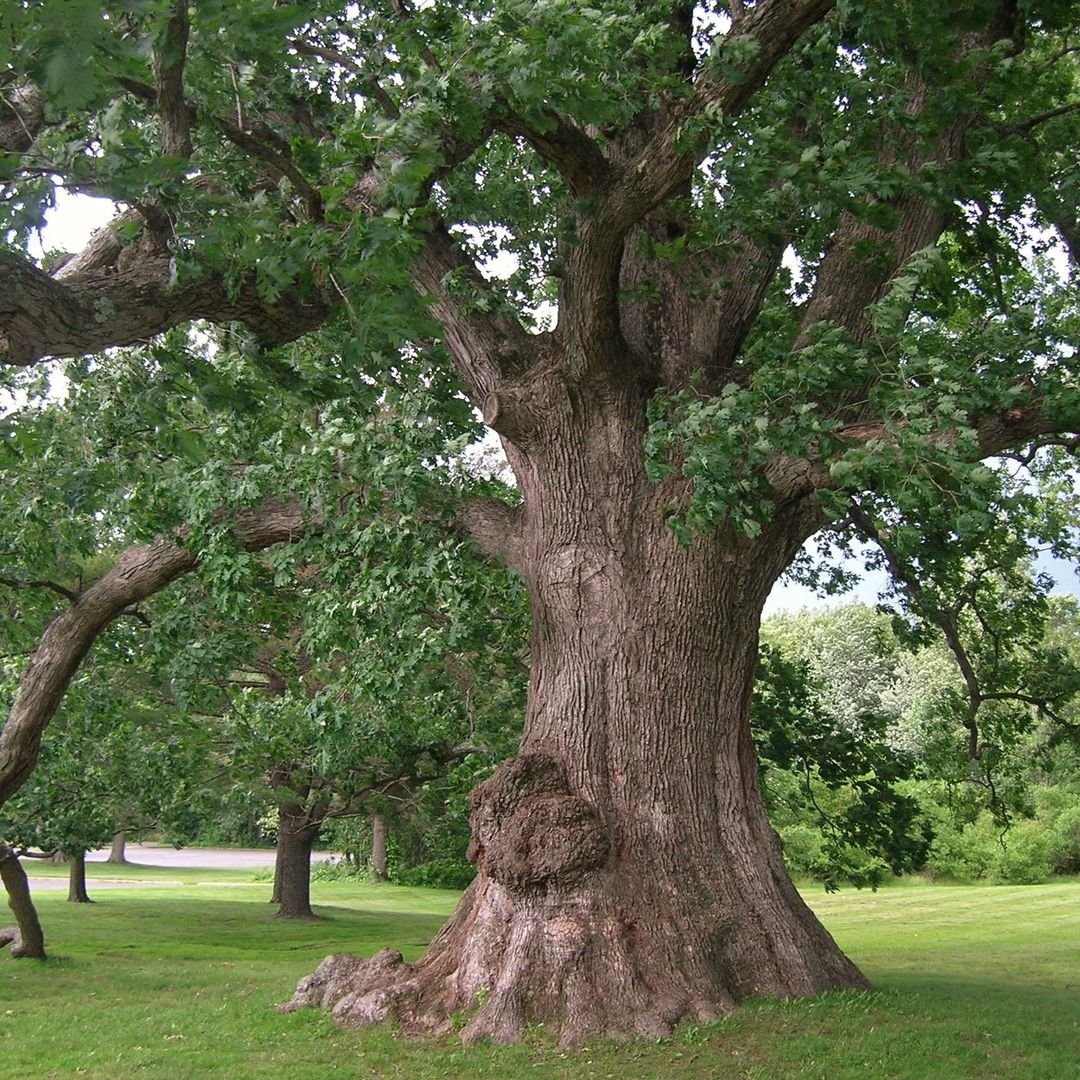
Here’s a short information chart about Oak Trees (Quercus species):
| Feature | Information |
|---|---|
| Scientific Name | Quercus (genus); various species like Quercus robur (English oak) |
| Family | Fagaceae |
| Type | Deciduous or evergreen depending on species |
| Size | Varies widely; typically medium to large trees |
| Leaves | Alternate, simple, lobed or toothed margins |
| Flowers | Catkins or small clusters; monoecious (male and female flowers on same tree) |
| Fruit | Acorns, often enclosed by a cupule (cap) |
| Habitat | Diverse; found in forests, woodlands, and sometimes urban areas |
| Range | Found throughout temperate and subtropical regions of the Northern Hemisphere |
| Importance | Ecological importance (support diverse wildlife); cultural significance |
| Uses | Timber (furniture, flooring), tannins (leather production), acorns (wildlife) |
| Notable Species | Quercus alba (White oak), Quercus rubra (Northern red oak) |
| Conservation | Varied; some species vulnerable due to habitat loss |
Oaks are some of the most famous trees in the world. They’re big, strong, and can live for hundreds of years.
Key features:
- Can grow over 100 feet tall
- Produces acorns that animals love
- Has strong, hard wood used for building
Oaks are great for large spaces. They give lots of shade and support wildlife. Many types of oak trees exist, each with its own unique traits.
2. Olive Tree (Olea europaea)
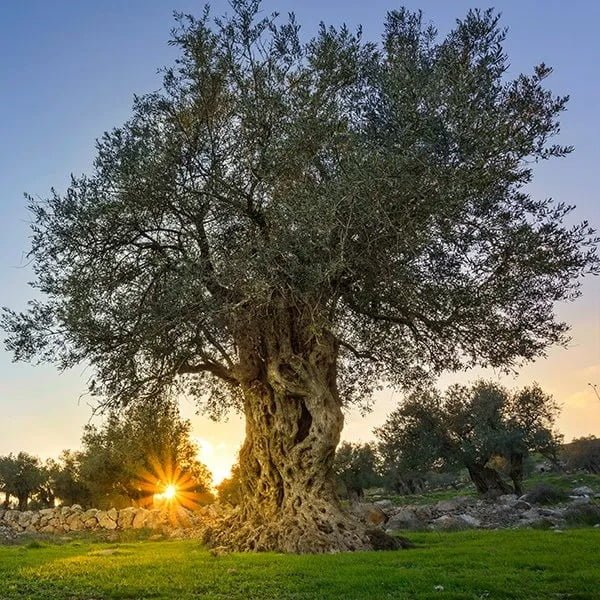
Here’s a short information chart about the Olive Tree (Olea europaea):
| Feature | Information |
|---|---|
| Scientific Name | Olea europaea |
| Family | Oleaceae |
| Type | Evergreen |
| Size | Medium-sized tree, typically 8-15 meters tall |
| Leaves | Opposite, lanceolate, silver-green color |
| Flowers | Small, white to cream-colored, fragrant, appear in clusters |
| Fruit | Olive drupe, initially green and turning blackish-purple when ripe |
| Habitat | Native to the Mediterranean region; cultivated globally in suitable climates |
| Range | Widely cultivated in Mediterranean countries, California, Australia, etc. |
| Importance | Significant cultural and economic importance for its fruit (olives) and oil |
| Uses | Olive oil production (culinary and cosmetic), table olives, wood (crafts) |
| Notable Varieties | Olea europaea var. europaea (European olive), Olea europaea var. africana (African olive) |
| Conservation | Generally not threatened; some wild varieties may be at risk due to habitat loss |
Olive trees are famous for their fruit and oil. They’ve been grown for thousands of years.
Key features:
- Can live for centuries
- Produces edible olives
- Has silvery-green leaves
Olive trees like warm, dry climates. They’re tough and can handle poor soil. Growing olive trees can be rewarding if you live in the right area.
3. Orange Tree (Citrus x sinensis)

Here’s a short information chart about the Orange Tree (Citrus × sinensis):
| Feature | Information |
|---|---|
| Scientific Name | Citrus × sinensis |
| Family | Rutaceae |
| Type | Evergreen |
| Size | Medium-sized tree, typically 5-8 meters tall |
| Leaves | Alternate, elliptical, glossy dark green |
| Flowers | Fragrant white flowers, usually appear singly or in small clusters |
| Fruit | Orange, round to oval, with a thick, textured peel |
| Habitat | Native to Southeast Asia; widely cultivated in subtropical and tropical regions |
| Range | Cultivated globally in warm climates |
| Importance | Major commercial fruit crop globally; significant economic and nutritional value |
| Uses | Fresh consumption, juice production, culinary purposes (zest, flavoring), essential oils |
| Notable Varieties | Valencia, Navel, Blood Orange |
| Conservation | Generally not threatened; cultivated extensively |
Orange trees give us one of the world’s favorite fruits. They’re a joy to grow and look at.
Key features:
- Grows 20-30 feet tall
- Has fragrant white flowers
- Produces sweet, juicy oranges
Orange trees need lots of sun and warm weather. They can’t handle cold winters. Caring for orange trees takes some work, but the fresh fruit is worth it.
4. Osage Orange (Maclura pomifera)

Here’s a short information chart about the Osage Orange tree (Maclura pomifera):
| Feature | Information |
|---|---|
| Scientific Name | Maclura pomifera |
| Family | Moraceae |
| Type | Deciduous tree |
| Size | Medium to large tree, typically 10-15 meters tall |
| Leaves | Alternate, ovate to elliptical, glossy green, with entire margins |
| Flowers | Inconspicuous, greenish-yellow, appear in spring |
| Fruit | Large, spherical fruit (multiple fruits fused), wrinkled, yellow-green |
| Habitat | Native to central and eastern United States |
| Range | Widely cultivated and naturalized in various regions globally |
| Importance | Historically used for hedgerows, erosion control; wood used for woodworking |
| Uses | Wood (durable, used for fence posts, bows), fruit (inedible, used decoratively) |
| Conservation | Not threatened; cultivated and naturalized widely |
The Osage Orange, also called Hedge Apple, is a tough North American tree.
Key features:
- Grows 30-60 feet tall
- Has thorny branches
- Produces large, bumpy green fruit
Osage Orange trees are often used as hedges or windbreaks. Their wood is very strong and was used to make bows. Learn more about the Osage Orange’s history and uses.
5. Oak-leaved Hydrangea (Hydrangea quercifolia)
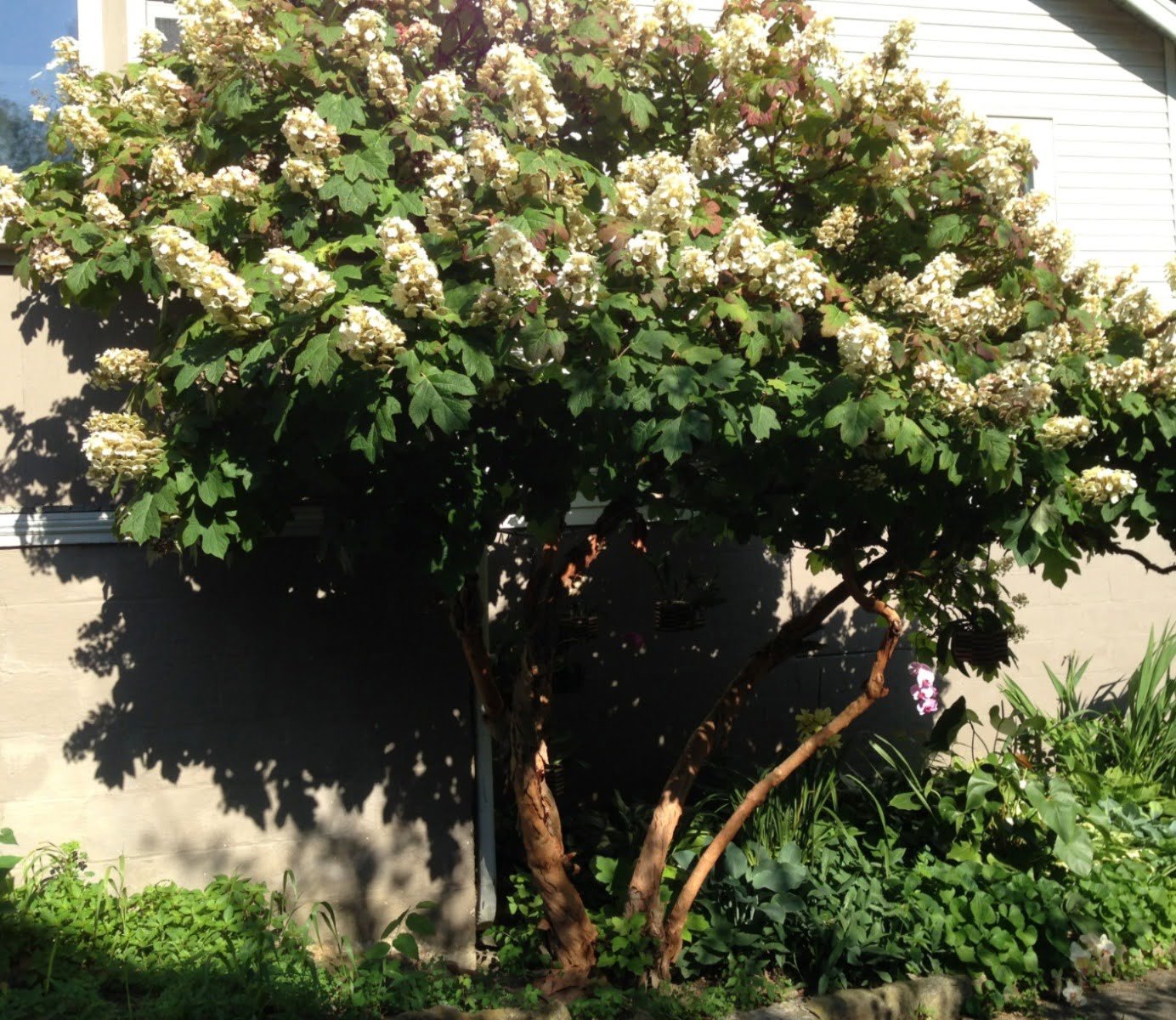
Here’s a short information chart about the Oak-leaved Hydrangea (Hydrangea quercifolia):
| Feature | Information |
|---|---|
| Scientific Name | Hydrangea quercifolia |
| Family | Hydrangeaceae |
| Type | Deciduous shrub |
| Size | Medium-sized shrub, typically 1-3 meters tall |
| Leaves | Opposite, lobed and resembling oak leaves, green to reddish-purple in autumn |
| Flowers | Large, cone-shaped clusters (panicles) of white to pinkish flowers in summer |
| Fruit | Small, dry capsules containing tiny seeds |
| Habitat | Native to southeastern United States |
| Range | Cultivated in gardens and landscapes in temperate regions |
| Importance | Ornamental plant, valued for its foliage and flowers |
| Uses | Landscaping (hedges, borders), cut flowers |
| Conservation | Not threatened; widely cultivated as an ornamental plant |
This small tree or large shrub is known for its beautiful flowers and fall color.
Key features:
- Grows 6-8 feet tall
- Has large, cone-shaped flower clusters
- Leaves turn bright red in fall
Oak-leaved Hydrangeas are great for small spaces or as understory plants. They like partial shade and moist soil. Growing Oak-leaved Hydrangeas can add beauty to your garden year-round.
6. Oleander (Nerium oleander)
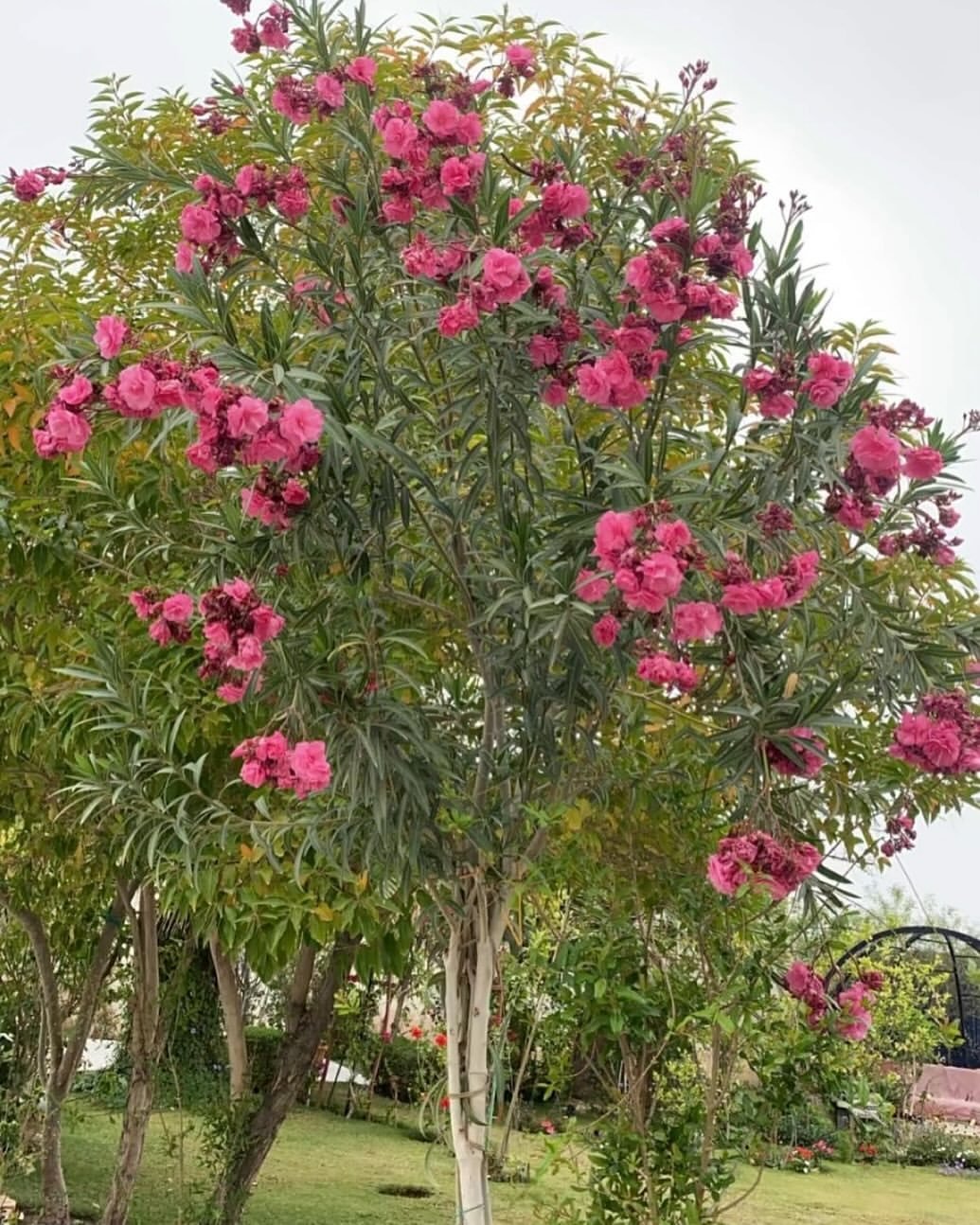
Here’s a short information chart about the Oleander (Nerium oleander):
| Feature | Information |
|---|---|
| Scientific Name | Nerium oleander |
| Family | Apocynaceae |
| Type | Evergreen shrub |
| Size | Medium to large shrub, typically 2-5 meters tall |
| Leaves | Opposite, narrow, lanceolate, leathery, dark green |
| Flowers | Showy, funnel-shaped flowers in clusters; colors include pink, white, red |
| Fruit | Small, elongated capsules containing numerous seeds |
| Habitat | Native to Mediterranean region; widely cultivated in warm climates |
| Range | Cultivated globally in subtropical and tropical regions |
| Importance | Ornamental plant; toxic properties limit other uses |
| Uses | Landscaping (hedges, borders), decorative purposes |
| Toxicity | Highly toxic; all parts of the plant contain cardiac glycosides |
| Conservation | Not threatened; commonly cultivated but can be invasive in some regions |
Oleander is a flowering shrub or small tree known for its pretty blooms.
Key features:
- Grows 6-12 feet tall
- Has pink, white or red flowers
- Is evergreen in warm climates
Oleanders are tough and can handle poor soil and drought. But be careful – all parts of the plant are poisonous. Oleander care is easy, making it popular in warm regions.
7. Ohio Buckeye (Aesculus glabra)
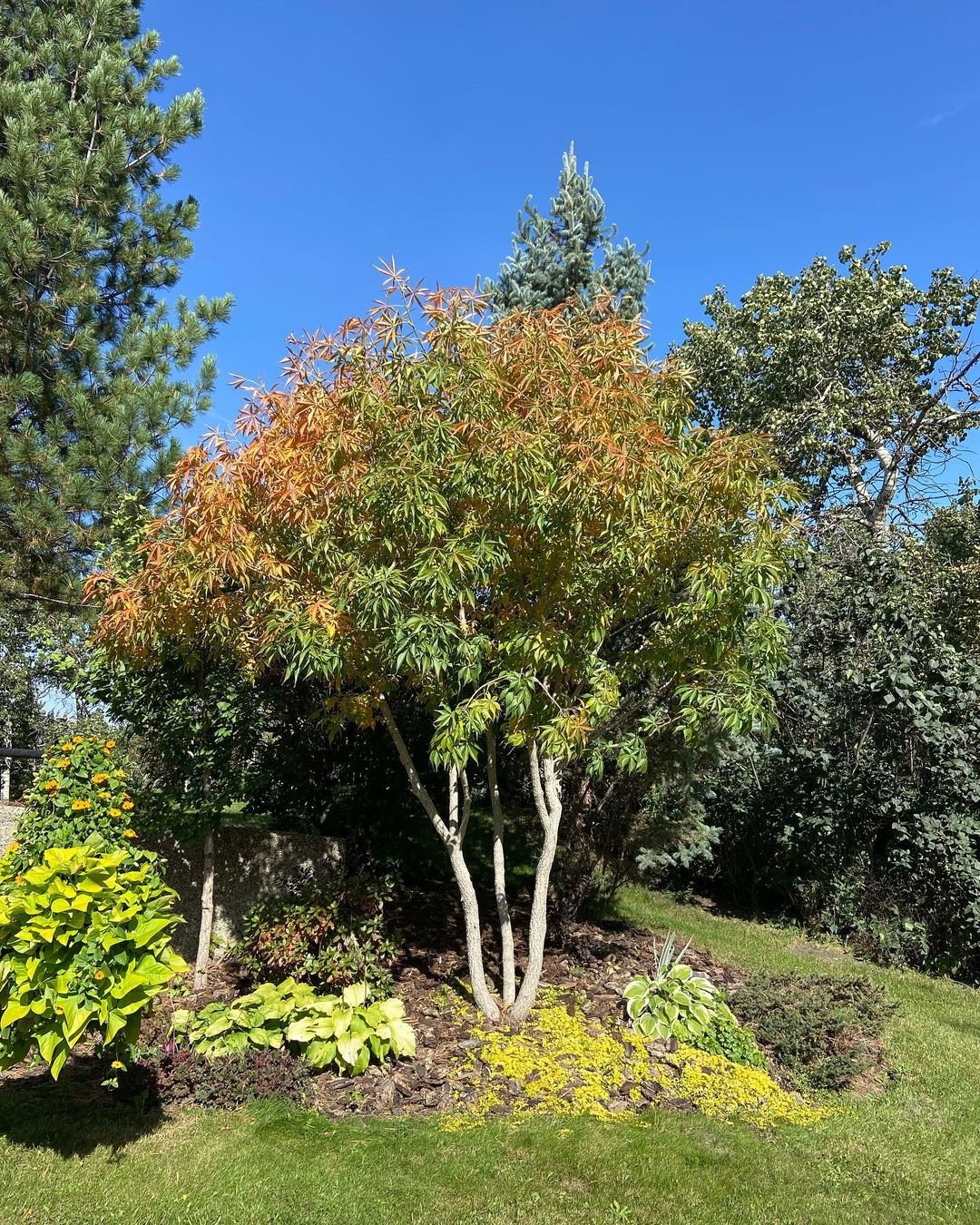
Here’s a short information chart about the Ohio Buckeye (Aesculus glabra):
| Feature | Information |
|---|---|
| Scientific Name | Aesculus glabra |
| Family | Sapindaceae |
| Type | Deciduous tree |
| Size | Medium-sized tree, typically 6-12 meters tall |
| Leaves | Palmately compound, with 5-7 leaflets; dark green in summer, yellow in autumn |
| Flowers | Small, yellow-green flowers in upright clusters (panicles), blooming in spring |
| Fruit | Smooth, round capsule (buckeye), containing one or more shiny brown seeds |
| Habitat | Native to eastern and central United States |
| Range | Found in moist woods, riverbanks, and ravines |
| Importance | Ornamental tree; seeds historically used by Native Americans |
| Uses | Landscaping (shade tree), wildlife habitat |
| Conservation | Not threatened; considered a species of least concern |
The Ohio Buckeye is a native North American tree known for its unique nuts.
Key features:
- Grows 20-40 feet tall
- Has palmate leaves with 5 leaflets
- Produces shiny brown nuts with light spots
Ohio Buckeyes are often planted for their spring flowers and fall color. The nuts are poisonous to humans but loved by wildlife. Learn about Ohio Buckeye cultivation and its role in ecosystems.
8. Orchid Tree (Bauhinia species)
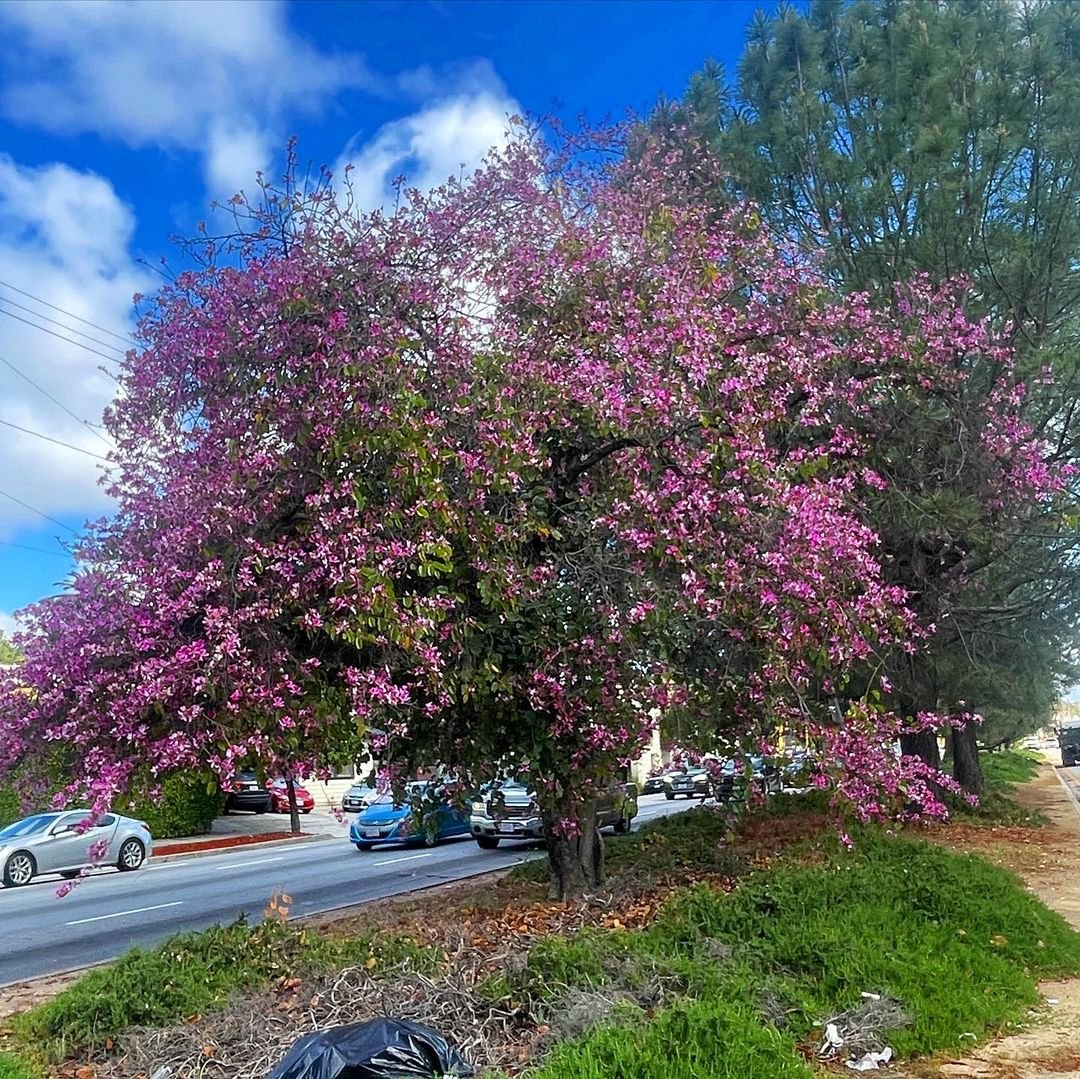
Here’s a short information chart about the Orchid Tree (Bauhinia species):
| Feature | Information |
|---|---|
| Scientific Name | Various species within the genus Bauhinia |
| Family | Fabaceae (Leguminosae) |
| Type | Mostly deciduous trees or shrubs |
| Size | Varies widely; typically medium to large, up to 15 meters tall |
| Leaves | Distinctive, bilobed (resembling a butterfly), green to reddish-purple |
| Flowers | Large, showy flowers resembling orchids, in various colors (white, pink, purple) |
| Fruit | Pods containing seeds |
| Habitat | Native to tropical and subtropical regions; cultivated as ornamentals |
| Range | Found in Asia, Africa, Australia, and the Americas |
| Importance | Ornamental plants; some species have medicinal uses |
| Uses | Landscaping (ornamental trees), herbal medicine |
| Notable Species | Bauhinia variegata (Purple Orchid Tree), Bauhinia purpurea (Butterfly Tree) |
| Conservation | Not generally threatened; cultivated widely |
Orchid Trees are known for their showy, orchid-like flowers.
Key features:
- Grows 20-40 feet tall
- Has large, colorful flowers
- Leaves are shaped like cow hooves
Orchid Trees need warm climates to thrive. They’re popular in tropical and subtropical areas for their beautiful blooms. Growing Orchid Trees can add a tropical touch to your landscape.
9. Olive-leaved Willow (Salix elaeagnos)
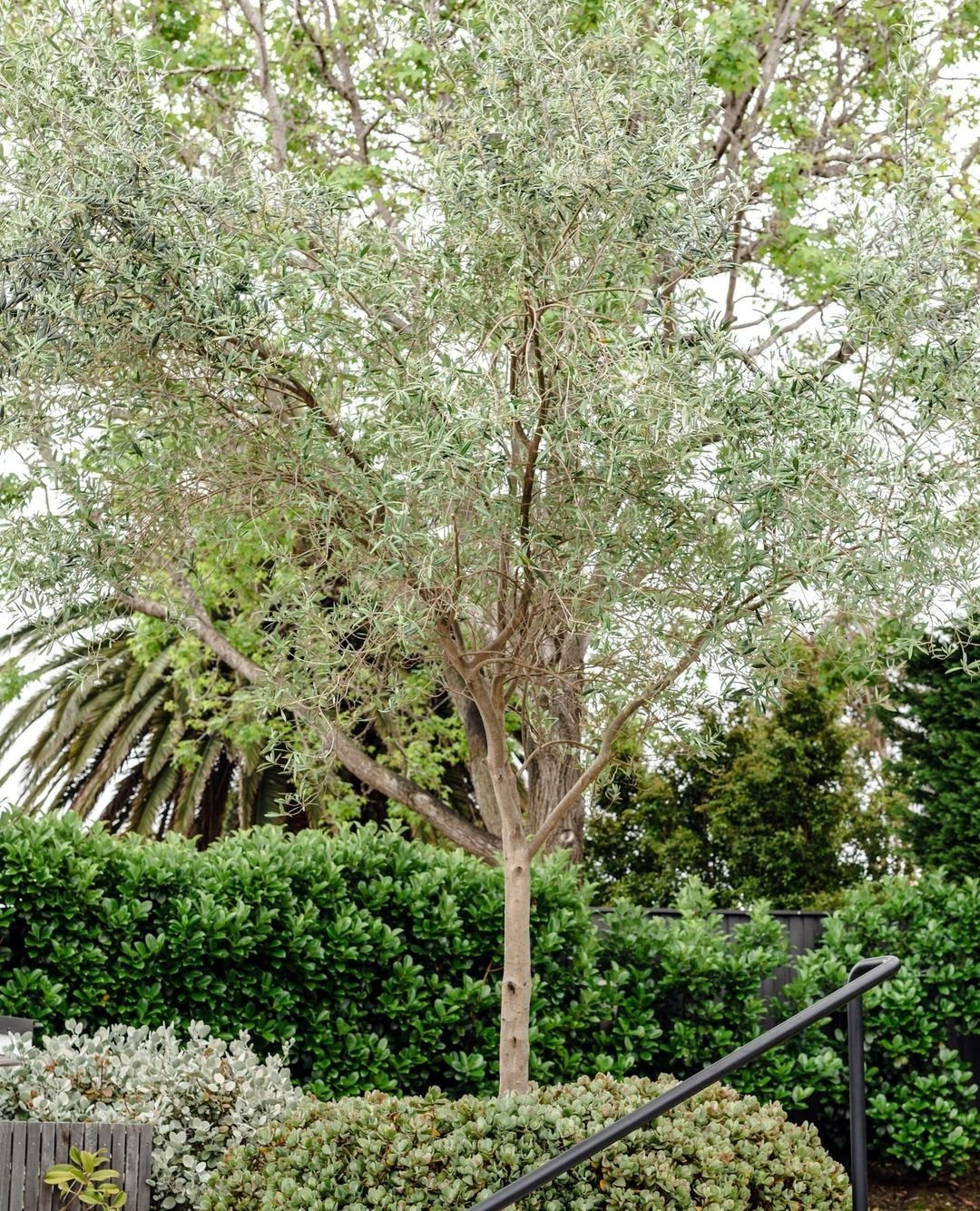
Here’s a short information chart about the Olive-leaved Willow (Salix elaeagnos):
| Feature | Information |
|---|---|
| Scientific Name | Salix elaeagnos |
| Family | Salicaceae |
| Type | Deciduous shrub or small tree |
| Size | Medium-sized, typically 3-6 meters tall |
| Leaves | Narrow, elongated, resembling olive leaves, gray-green in color |
| Flowers | Small, inconspicuous, appearing in catkins (clusters) in spring |
| Fruit | Small capsules containing tiny seeds |
| Habitat | Native to Europe and Asia; cultivated in gardens |
| Range | Widely distributed in temperate regions |
| Importance | Ornamental plant; used in erosion control and landscaping |
| Uses | Landscaping (hedges, screens), erosion control |
| Conservation | Not threatened; cultivated as an ornamental plant |
This willow species is known for its narrow, olive-like leaves.
Key features:
- Grows 15-30 feet tall
- Has long, narrow leaves
- Likes wet soil
Olive-leaved Willows are great for wet areas or near water features. They grow quickly and can help prevent soil erosion. Learn more about willow tree species and their uses.
10. Old Man Banksia (Banksia serrata)
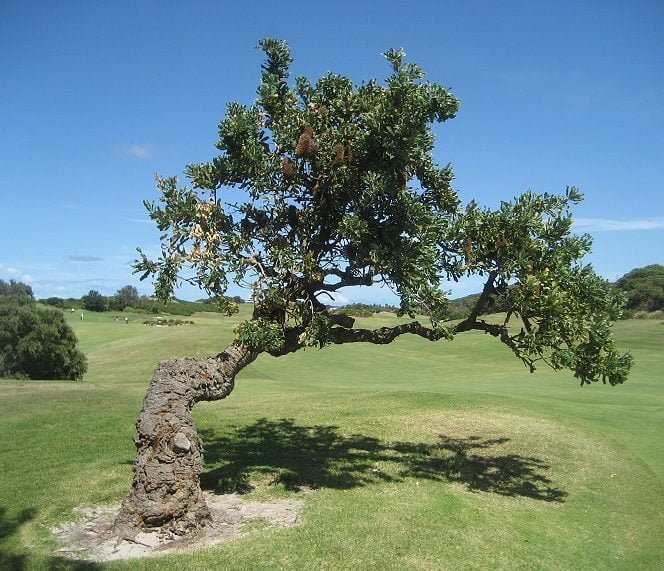
Here’s a short information chart about the Old Man Banksia (Banksia serrata):
| Feature | Information |
|---|---|
| Scientific Name | Banksia serrata |
| Family | Proteaceae |
| Type | Evergreen tree or shrub |
| Size | Medium-sized tree or shrub, typically 4-15 meters tall |
| Leaves | Alternate, serrated margins, dark green and leathery |
| Flowers | Large, cylindrical flower spikes (inflorescences) in shades of yellow or red |
| Fruit | Woody seed cones, persistent on the plant |
| Habitat | Native to eastern Australia, particularly coastal regions |
| Range | Found in coastal heathlands, woodlands, and forests |
| Importance | Important for its ecological role as a food source for wildlife, especially birds |
| Uses | Ornamental plant in gardens and landscapes |
| Conservation | Not threatened; widespread and common in its native range |
Old Man Banksia is an Australian tree known for its unique flowers and seed pods.
Key features:
- Grows 15-50 feet tall
- Has large, saw-toothed leaves
- Produces large, cone-like flower spikes
This tree is tough and can handle poor soil and drought. It’s a favorite of native Australian wildlife. Banksia cultivation is gaining popularity outside Australia.
Choosing the Right ‘O’ Tree for Your Space
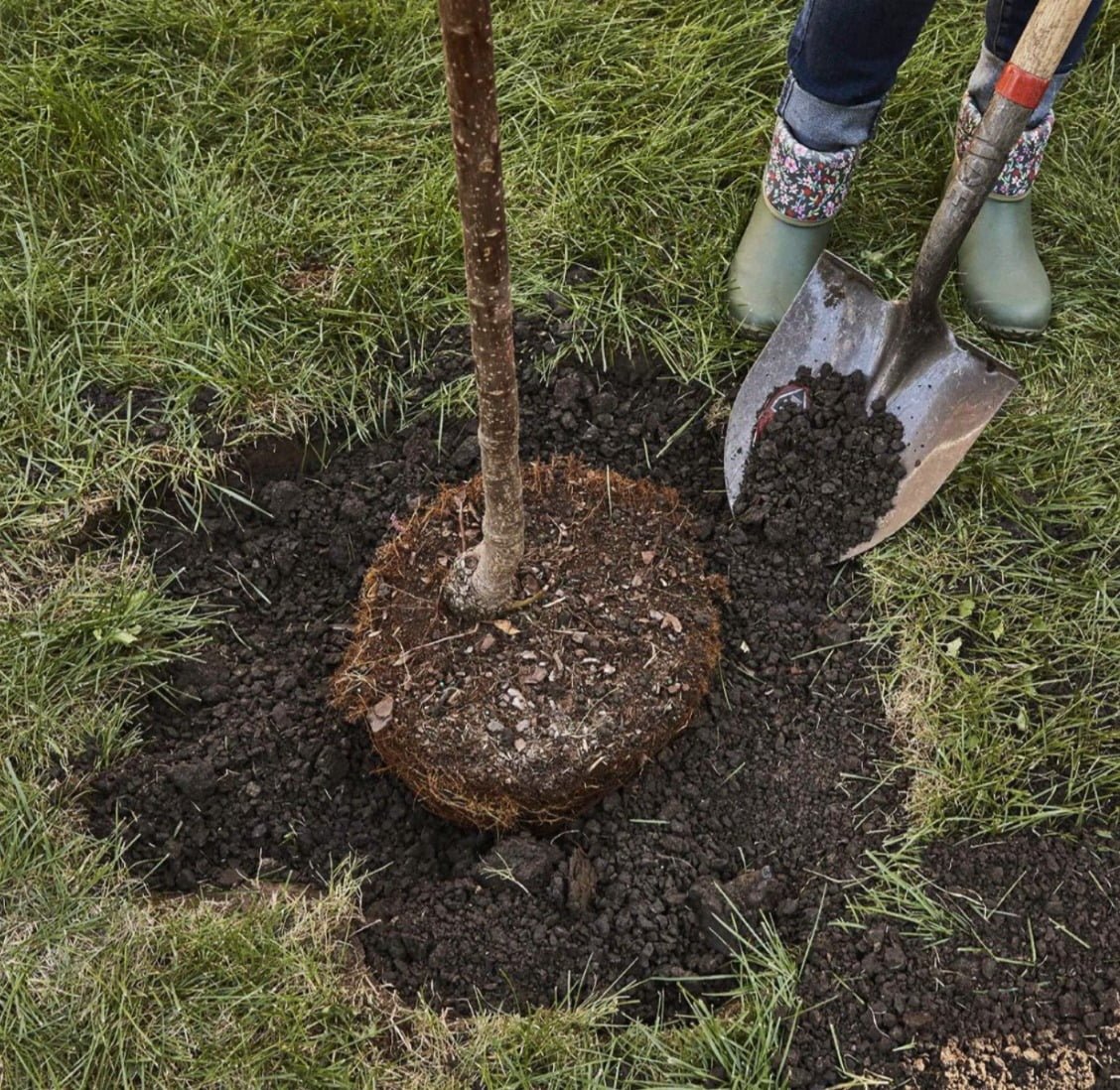
When picking a tree, think about:
- Size: How big will the tree get? Do you have enough space?
- Climate: Can the tree survive where you live? Check your hardiness zone.
- Soil: What kind of soil do you have? Does it match what the tree needs?
- Sun: How much sunlight does the spot get?
- Purpose: Do you want shade, fruit or just something pretty to look at?
Take your time choosing. Trees are a long-term addition to your landscape. The USDA Plant Hardiness Zone Map can help you choose trees that will thrive in your area.
Caring for Your New ‘O’ Tree
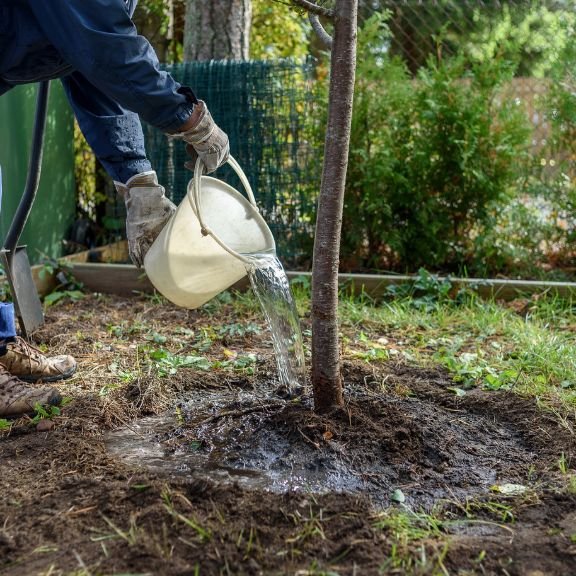
Once you’ve planted your tree, here’s how to keep it healthy:
- Water regularly, especially when it’s young.
- Mulch around the base to keep moisture in and weeds out.
- Prune dead or damaged branches to keep the tree healthy.
- Fertilize if needed, but don’t overdo it.
- Watch for pests or diseases and treat them early.
Good care will help your tree grow strong and beautiful. Learn more about proper tree care techniques to keep your new tree healthy.
The Benefits of Planting Trees
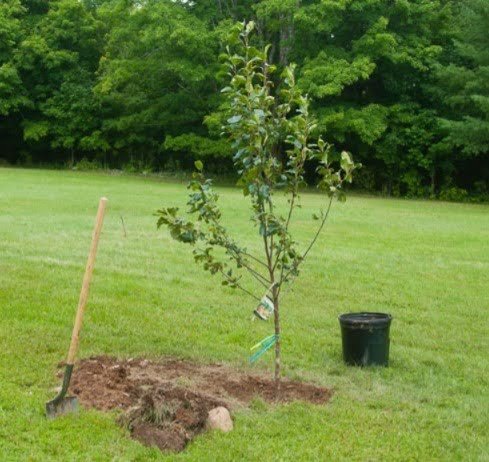
Trees do more than just look nice. They help our world in many ways:
- Clean Air: Trees absorb pollution and give us clean oxygen.
- Cool Spaces: They provide shade and help cool our cities.
- Save Soil: Tree roots hold soil in place and stop erosion.
- Help Wildlife: Many animals use trees for food and homes.
- Manage Water: Trees help control rainwater and improve water quality.
Urban forestry research shows that more trees in cities can make people healthier and happier.
‘O’ Trees in History and Culture
Many ‘O’ trees have played important roles in human history:
- Oak trees were sacred to many ancient cultures and are symbols of strength.
- Olive trees are symbols of peace and have been grown for thousands of years.
- Orange trees changed history when sailors learned that citrus fruits could prevent scurvy.
Ethnobotanical studies show how important trees have been to human cultures throughout history.
Growing ‘O’ Trees from Seeds
If you’re patient, you can grow many ‘O’ trees from seeds:
- Collect seeds when they’re ripe.
- Clean the seeds and remove any pulp.
- Store seeds properly if you’re not planting right away.
- Plant seeds at the right depth and time of year.
- Care for seedlings carefully as they grow.
Growing trees from seeds takes time but can be very rewarding. Learn more about seed propagation techniques for different tree species.
‘O’ Trees for Different Climates
Not all ‘O’ trees grow everywhere. Here are some choices for different climates:
- Cold Climates: Oak, Ohio Buckeye
- Warm Climates: Orange, Oleander, Orchid Tree
- Dry Climates: Olive, Osage Orange
- Wet Climates: Oak-leaved Hydrangea, Olive-leaved Willow
Always check if a tree is invasive in your area before planting. The USDA PLANTS Database can help you find native alternatives.
Common Problems with ‘O’ Trees
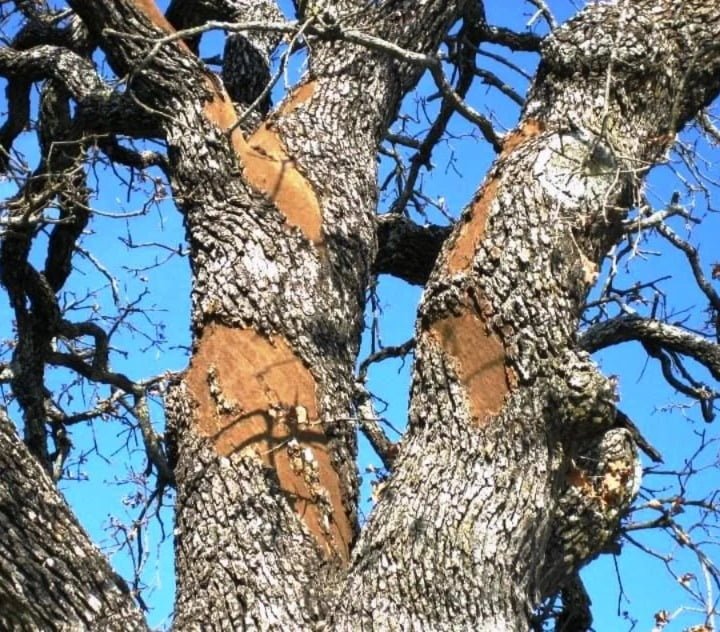
Even tough trees can have problems. Here are some common issues:
- Pests: Look for insects eating leaves or boring into bark.
- Diseases: Watch for unusual spots on leaves or fungus on bark.
- Environmental Stress: Too much or too little water can harm trees.
- Physical Damage: Protect trees from lawn mowers and other injuries.
Early detection is key to treating tree problems. Learn about common tree diseases to keep your trees healthy.
Conclusion
Trees that start with ‘O’ offer a wide range of choices for your landscape. From the mighty Oak to the pretty Orchid Tree, there’s an ‘O’ tree for every situation.
When you choose a tree, think about your space, climate, and what you want from the tree. Take good care of your new tree and it will reward you with beauty, shade and maybe even fruit for many years.
Remember, planting a tree is more than just adding to your yard. It’s a gift to the future. Trees clean our air, help wildlife and make our world more beautiful.
So, which ‘O’ tree caught your eye? Whether you’re planting a big Oak or a small Olive, you’re making a choice that will benefit you and the environment for years to come.